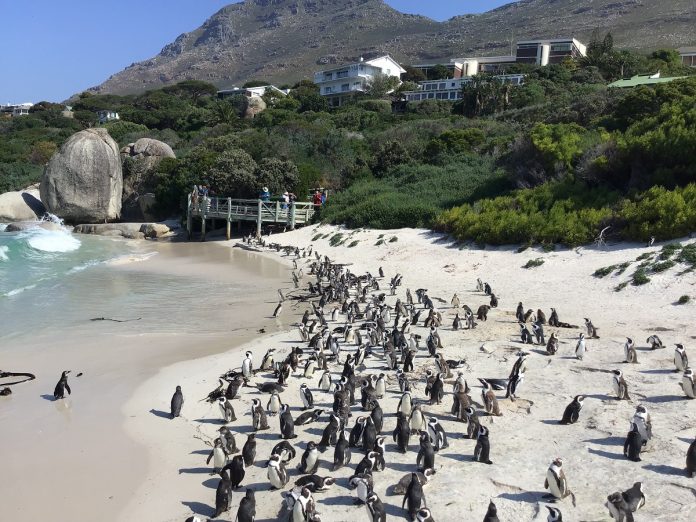
Professor Emeritus Doug Butterworth, Department of Mathematics and Applied Mathematics, University of Cape Town, responds to comments made by SANCCOB/Birdlife in a Fishing Industry News article, 5 February 2025.
In the Fishing Industry News article “Will ‘Biologically Meaningful’ Island Closures Save the African Penguin?” published on 5 February, SANCCOB and Birdlife challenge my comment regarding their court application which seeks to close certain areas to fishing – specifically my statement that they calculate the sizes of these areas under the implicit assumption that penguins can swim about as fast as a Boeing flies (Butterworth, 2025).
They respond that their proposed closures “are grounded in real-life African penguin foraging routes, and are certainly not based on Penguins swimming as fast as Boeings!”.
This response is especially concerning, as it makes clear that SANCCOB/Birdlife fail to understand the basic science of their calculations. These calculations also underlie the fundamental component of their court application, which seeks closure to fishing of the areas that penguins use for foraging around their colonies.
The use of data
Indeed, real-life data have been used for these calculations, but those data indicate only the position of a penguin when it transmits telemetry data. Assumptions then need to be made about where the penguin is located between these transmission times.
The requisite detail of these telemetry data became available only after final submissions related to the Court application were due. This detail showed that the time interval between these transmissions is m typically 2 minutes. Yet the method used by SANCCOB/Birdlife to account for where penguins go between these transmissions assumes that travelling distances in these periods can extend to more than 20km. Simple arithmetic then shows that this requires penguins to be able to swim as fast as Boeings fly.
This has substantive implications for SANCCOB/ Birdlife’s court application. The areas they calculate as needing to be closed to fishing are substantially larger than where these data realistically indicate that the penguins forage.
This was pointed out in a scientific paper to DFFE (Butterworth 2024), also circulated to scientists involved in penguin-related discussions, at the end of November last year. Those circulated included ENGOs, and in particular Birdlife’s McInnes who submitted the founding affidavit for the SANCCOB /Birdlife court application.
The persons circulated were asked to indicate plausible mechanisms to justify SANCCOB/Birdlife’s assumptions concerning the large range about transmitted positions that they used for calculating penguin foraging areas; the paper further positioned that in the absence of such, the SANCCOB/Birdlife calculations of these areas had been scientifically falsified and needed to be withdrawn. It is now three months later, and Birdlife have failed to offer such alternative mechanisms, or explain why their calculations have scientific justification. The only response which they have provided is their non-answer reported in Fishing Industry News on 5 February.
This raises wider and serious questions concerning scientific competence and/or ethics in such matters. How can the SANCCOB/Birdlife court application be justified in science when those applying have been unable to refute scientific falsification of the justification they provide for the primary remedy they seek from the Court: viz. the alternative areas they propose for fishery closures? This is particularly as SA has ratified, and is bound by, the United Nations Convention on the Law of the Sea, which requires marine resource decisions to be based on the best available scientific evidence (Rogers J, 2018).
The major causes of the Penguin decline
Many of the other comments offered by ENGOs in the 5 February article are scientifically questionable. For example, WWF’s Craig Smith states that “the largest unresolved threat [to penguins] remains the competition with the small pelagic fishery for food”.
Yet predation by the seal population (greatly expanded since the 1970s) on penguins of only some 0.01 penguins per seal per year is needed to account entirely for the penguin decline (Butterworth and Ross-Gillespie, 2023). Can Smith explain how this threat has been “resolved”?
In what is now almost two years since the International Panel on Penguins tabled its report, DFFE has still to initiate discussion of the report’s contents and suggestions. In the meantime, the need to try to ascertain and address the major causes of the alarming penguin decline (regarding which the role of food scarcity is indicated to be small at best) has become even more acute.
Why this delay? Certainly the effort diverted to pursue the court application, which primarily seeks an action whose scientific justification has been falsified (a conclusion which the applicants have been unable to challenge), is playing an undesirable role.
Clearly it is in the best interests of penguin conservation that the court application is withdrawn immediately, to allow for scientific deliberations that will address the reasons for the decline to resume without further delay.
References
Butterworth, DS. 2024. Are current mIBA-based proposals for closed areas around South African penguin colonies flawed? Document submitted to DFFE for the attention of their planned Penguin Scientific Working Group, November 2024. 5 pp.
Butterworth, DS. 2025. Understanding the decline of African penguins, a call for evidence-based action. Argus, 3 January 2025.
Butterworth, DS and Ross-Gillespie, A. 2023. Exploration of a MICE approach to evaluate the impact of fish abundance on penguin survival. DFFE document FISHERIES/2023/NOV/SWG-PEL/25rev. 37 pp.
Rogers J, 2018. Judgment in Case No 11478/18 before the High Court of South Africa (Western Cape Division). 52 pp.
DID YOU KNOW Fishing Industry News has been selected by FeedSpot as one of the Top 30 Fishing Blogs on the web.
https://bloggers.feedspot.com/fishing_blogs

















